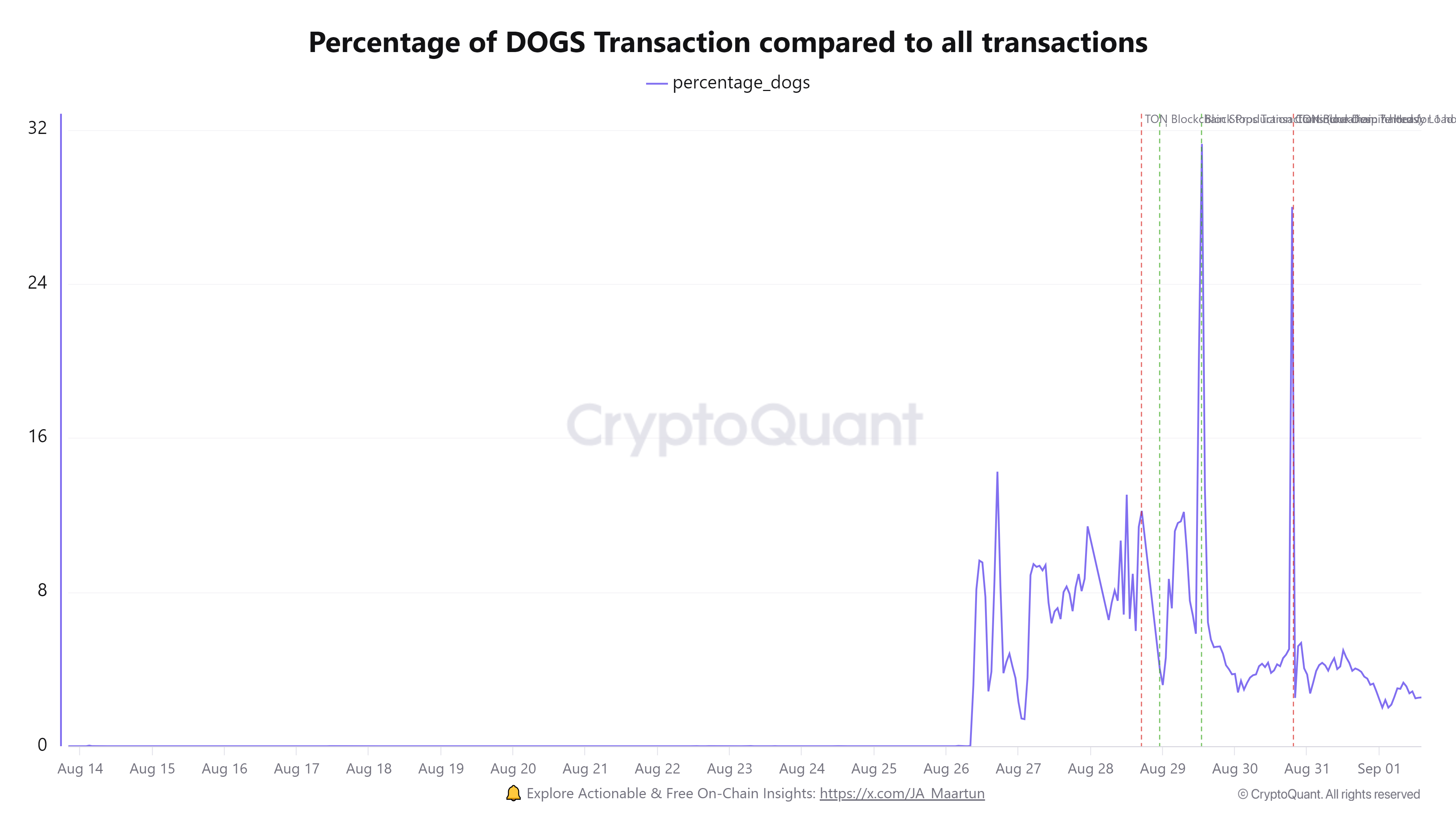The Open Network (TON), the blockchain network associated with Telegram, has surpassed 1 billion transactions, according to data from TON API and aggregated by CryptoQuant community analyst Maartunn.
This achievement comes less than a week after the network experienced two major outages caused by the airdrop of the DOGS memecoin.
1 billion transaction
TON’s transaction volume has now exceeded 1.02 billion, emphasizing its critical role in the broader blockchain ecosystem. Remarkably, half of these transactions occurred within the last three months, highlighting the platform’s rapid growth and increasing user engagement.
TON has grown substantially in recent months thanks to its strategic partnership with Telegram, the popular messaging app with almost one billion users globally.
The network has heavily capitalized on this integration to reach approximately 280,000 daily active users and process an average of 800,000 daily transactions, making it one of the most heavily adopted blockchain networks.
In a recent report, crypto exchange Bybit stated that Telegram’s TON integration has the potential to replicate WeChat’s success and become the world’s next SuperApp with the novel addition of Web3 capabilities.
How DOGs caused TON outages
CryptoSlate, using CryptoQuant data, observed that the two recent outages on the TON network were caused by the huge demand generated by the DOGS token airdrop. This surge led to a massive increase in transaction volume, with TON processing an astonishing 20 million transactions between Aug. 27 and 29.
During this period, DOGS transactions accounted for over 30% of the network’s total transactions. The memecoin also drove the average transaction fee on the network to a six-month high, according to Tonstat data.

Ian Wittkopp, head of TON Ventures, noted that the DOGS memecoin token airdrop likely resulted in TON’s highest day of active users.
So, the intense network activity left several validators struggling to clean outdated transaction data from the database, leading to a loss of consensus among validators. This inability to maintain synchronized records inadvertently disrupted the processing of new transactions, bricking the blockchain network.

Meanwhile, crypto analyst Maartun noted another spike in activity on Aug. 29, when the network faced a heavy load. During this period, an average of 100 transactions were processed per block within seconds, with DOGS transactions comprising around 35% of all transactions in some blocks.



